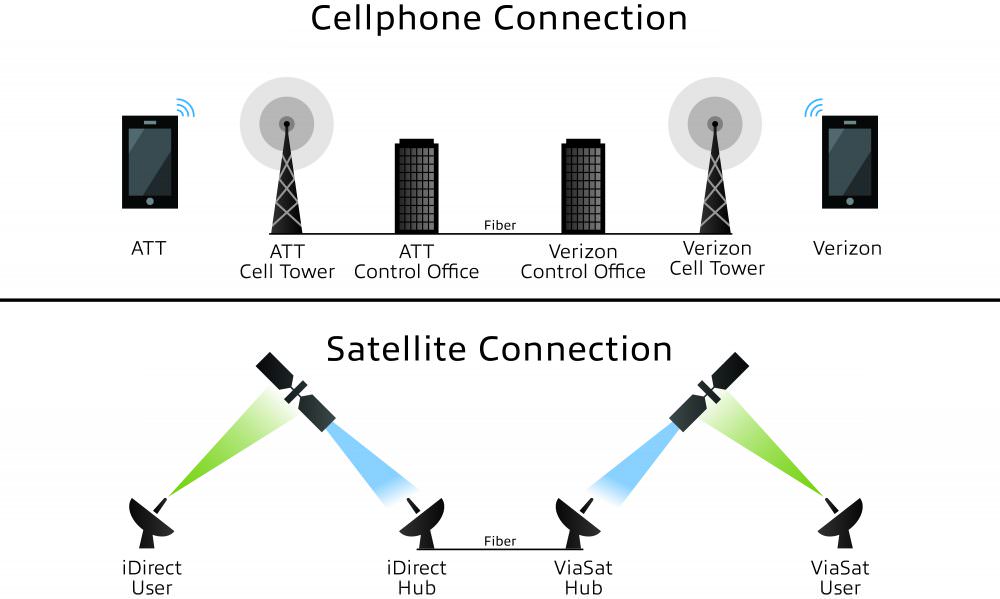I recently read an article where a senior Department of Defense (DoD) official was quoted as stating, “terrestrial cellular networks are seamlessly integrated across the globe.” This official then wondered aloud why this is not done today with satellite networks.
However – in reality – there are remarkable similarities between terrestrial cellular networks and satellite networks when it comes down to how one user talks to another user – whether it’s on the same network or different networks.
In the cell phone industry – which is supported by millions of users – the integration is so far removed from the user it is invisible, and thus appears to be seamlessly integrated. And in most cases, a user of Internet services via satellite is oblivious to their seamlessly-integrated world of emails, games, and videos.
However, for many of us in the satellite industry, we see how difficult and frustrating it can be to connect one user on one network to another user on a different network.
The truth of the matter is, the connection between SatCom users on different networks is very similar to how cell phones from different providers also communicate. Let’s take a look at how two cell phones talk to each other as well as two satellite users and the similarities will be readily available.
Across the US mobile phone providers, there are two basic technologies; CDMA (Code Division Multiple Access) and GSM (Global System for Mobiles). They represent a gap you can’t cross. This is the reason you can’t use an AT&T phone on Verizon’s network and vice versa.
However, an AT&T phone can certainly talk to a Verizon phone. This is done through protocol assembler and disassembler (PAD) processes located at a Central Office (CO) for each provider. These processes are responsible for converting CDMA or GSM protocols into IP based digital data. The CO is also responsible for knowing which cell tower each user is connected to, routing the traffic, and tracking billing information. A Verizon CO is connected to the AT&T CO via terrestrial circuits.
Satellite networks are similar in several ways. There are more than two basic technologies, but the number is still limited to just a few. Two common technologies are Hughes and ViaSat. They too represent a gap you can’t cross. Just like in the cellphone industry, a Hughes Net subscriber can talk to a ViaSat Exede subscriber by going from their satellite dish (cellphone), through the satellite (cell tower) to a Hughes Hub (cellphone CO) across terrestrial circuits to the ViaSat Hub, through another satellite to the other satellite dish.
The challenge in the satellite industry becomes more pronounced as we shift towards supporting an ever-increasing number of mobility customers. For these customers to transfer from one technology to another, they are required to carry multiple sets of equipment, with each set designed to work with a specific network. This equipment adds mass and takes up space in platforms where space is a limited commodity.
Not all that long ago, a GSM phone could never work on a CDMA network and vice versa. As technology has evolved, cell phone manufacturers are making models that can work on either a GSM or CDMA network via software applications. These phones are referred to as “unlocked” phones and usually cost more and some providers still don’t allow their use.
To enable our mobile SATCOM users, we need to see this same interchangeable mindset push technology along and create a flexible modem that can seamlessly integrate with a ubiquitous ground segment.
